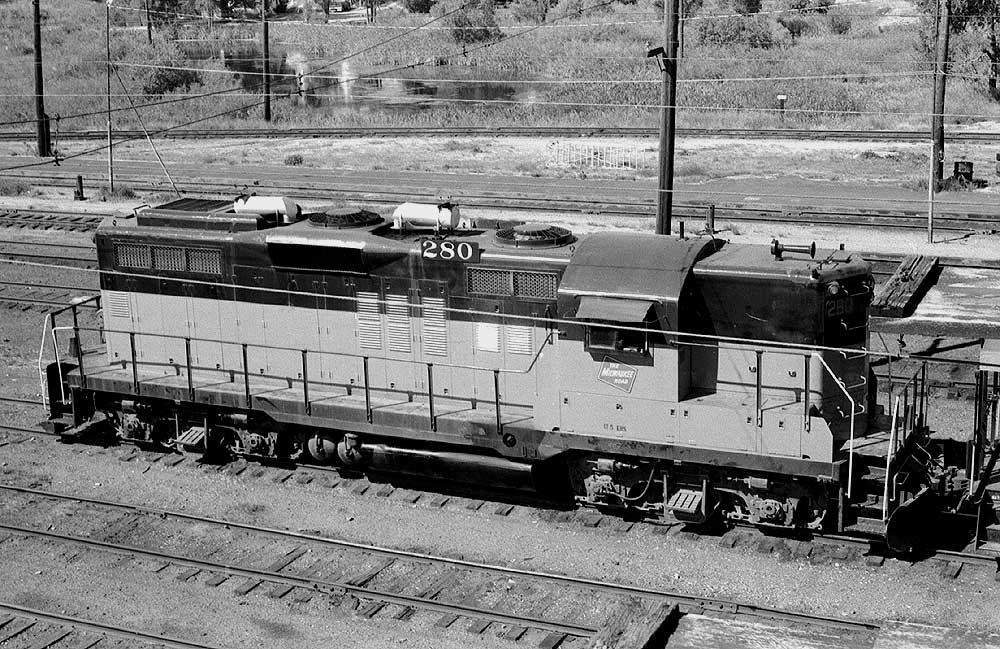
The Milwaukee Road's Pacific Extension:
Harlowton Montana, August 1974
Harlowton Montana, August 1974
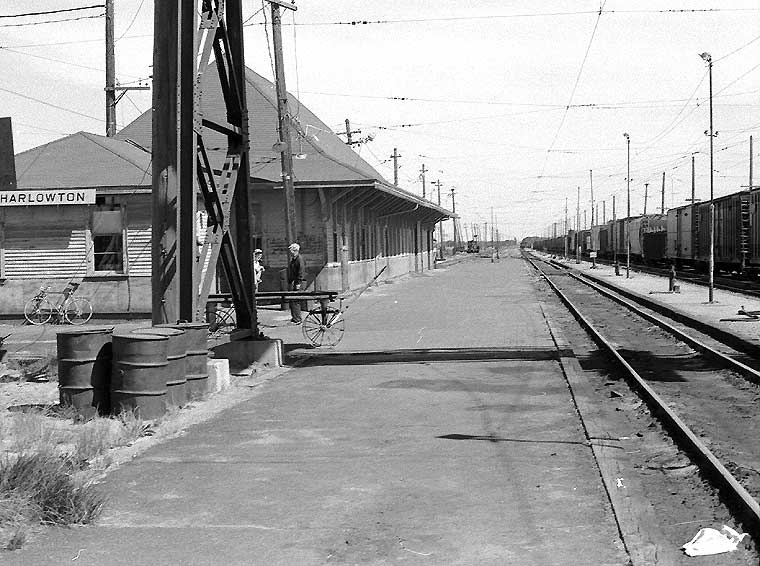
In contrast to Avery, Harlowton, at the eastern-most extent of the Milwaukee's electrification, showed a relatively prosperous mainline appearance. The depot and platform looked sound and the the baggage wagon (above) ready to receive luggage off of the Olympian Hiawatha, which had last called upon Harlow more than a decade prior. The peeling paint on the depot walls told the true story, however. That's the station agent talking to my wife (just visible behind the column). He rode his bike (leaning against the wall under the station sign) to work, weather permitting, and was quite intrigued by our journey, which had already covered 2000+ miles. In fact, we had a tough time getting out of Harlowton, because everyone in town was so congenial and curious. In all, I'd rate this town as the most friendly town in the most friendly state that we encountered. It's a darn shame that they lost their railroad...and that parts of Montana have become a residential suburb of Hollywood. The first three photos are looking eastward, BTW.
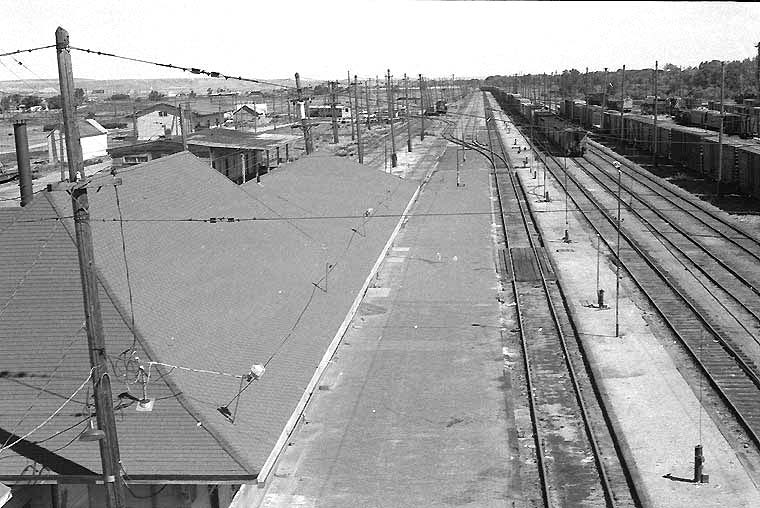
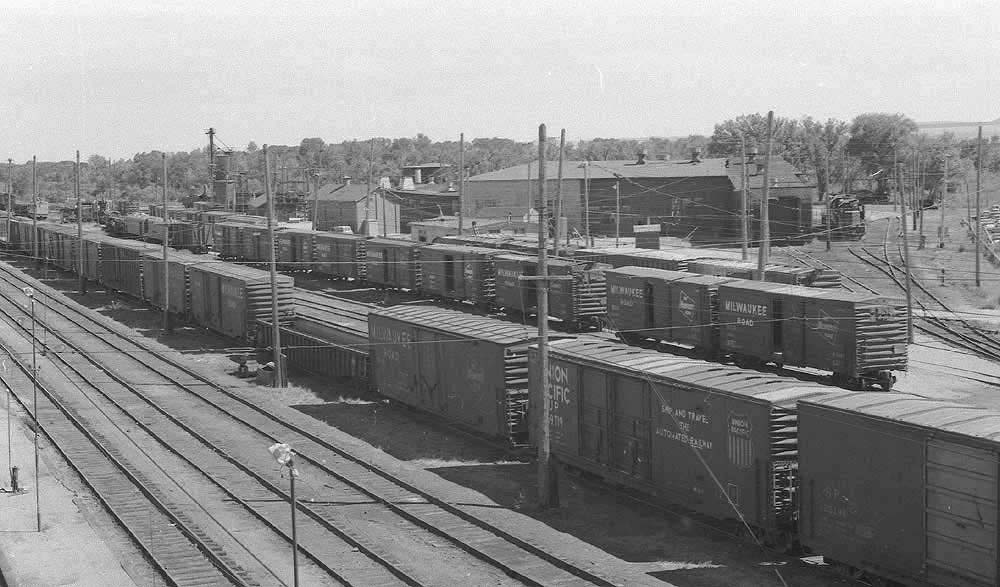
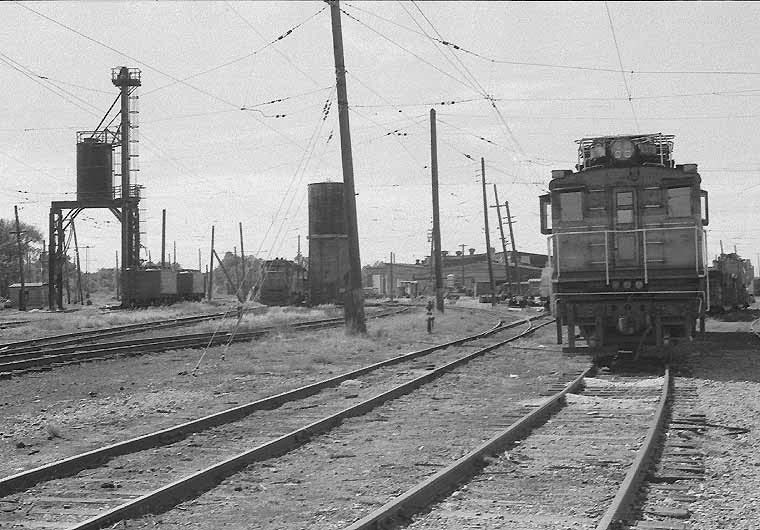
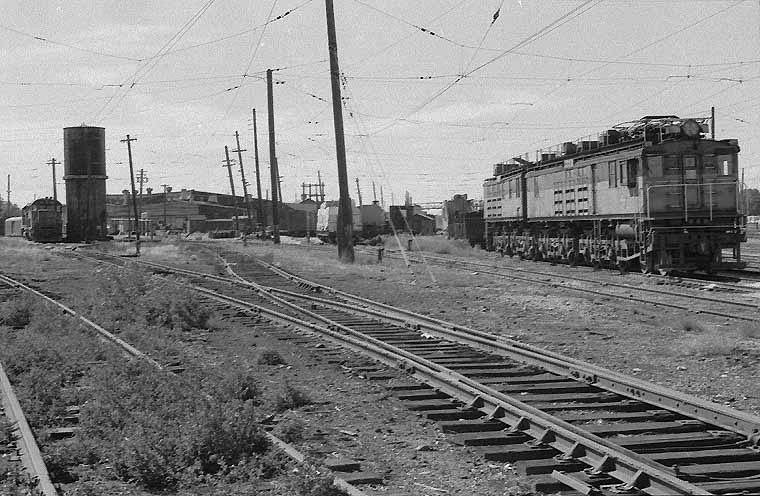
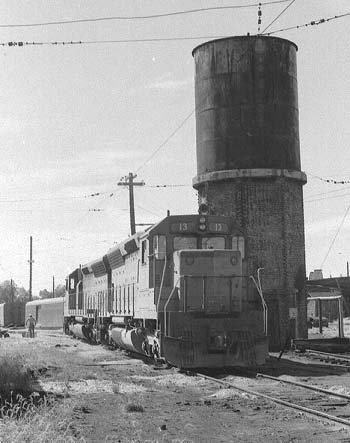
The top two and left photos are looking westward, and the above photo's large building (in left, center) is the roundhouse. Just visible in the distance to the rear of the Pelicans (boxcab electrics) is the overhead pedestrian bridge by the depot, from which I took the yard photos.
Below, we see the turntable and unused-looking roundhouse.
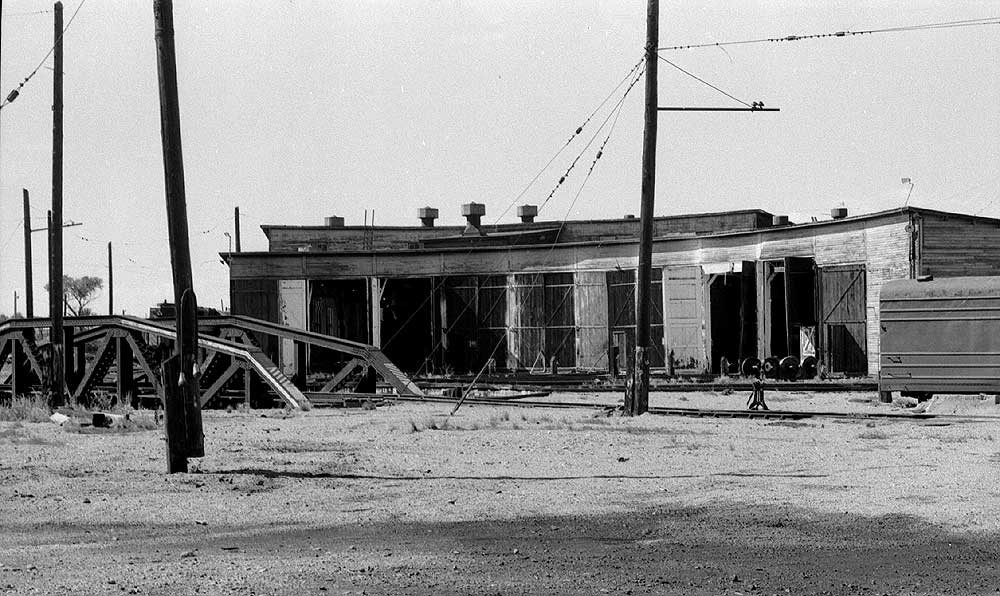
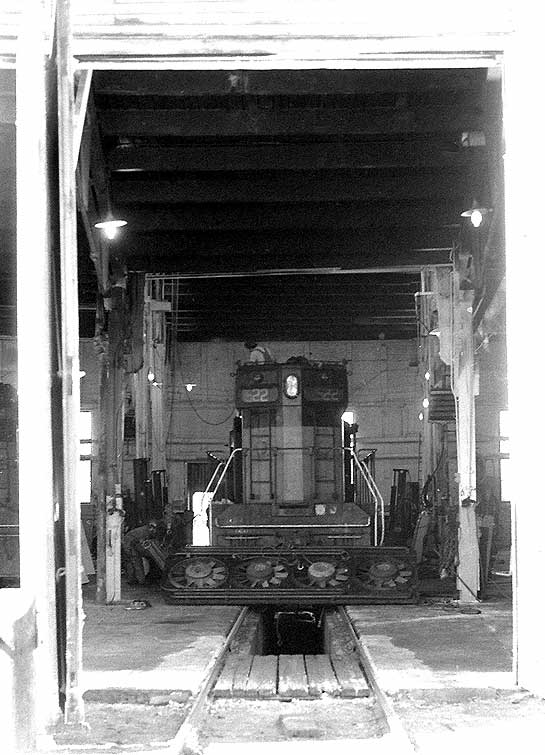
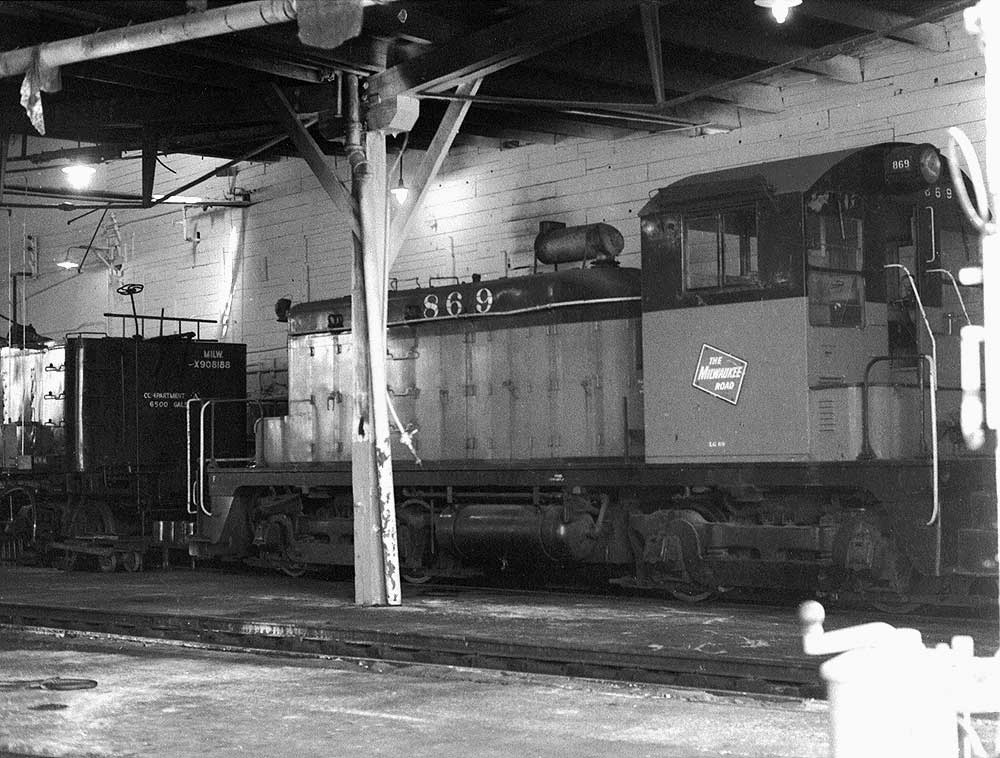
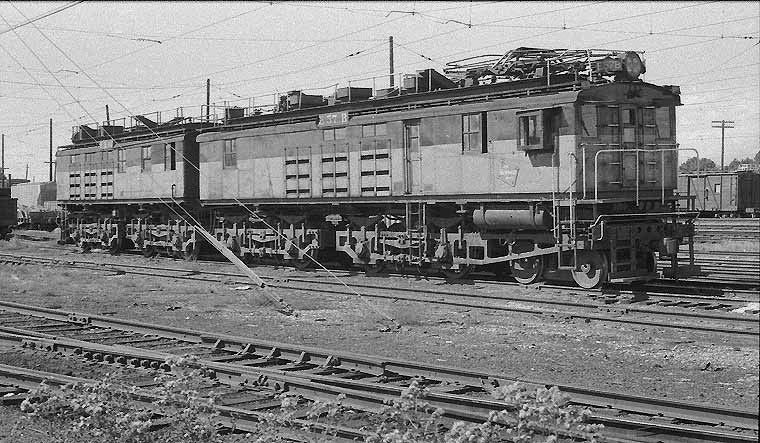
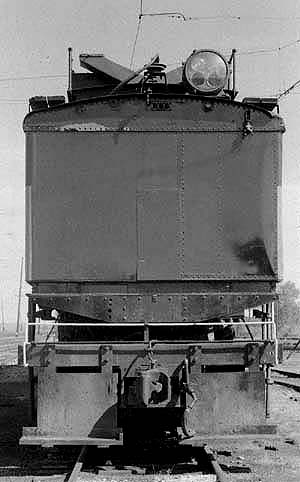
But, by then the electrics were done, so it's only fitting that the diesel yard goat, late model GPP #280 (below), conclude things.
